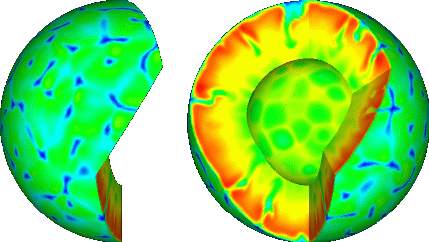Geodynamics

Geodynamics is concerned with the physical mechanisms and forces that drive large-scale geologic processes such as mountain building and plate motions in the Earth (and other terrestrial planets). The large-scale geologic activity of our planet is primarily controlled by thermal convection of the underlying mantle that reflects the gradual heat loss of the Earth over geologic time scales. Therefore, Geodynamics tries to develop a quantitative understanding of the evolution and dynamics of Earth’s mantle and lithosphere within a physical framework.
Research in the Munich Geodynamics group at LMU is based on three pillars:
Click here for Research Overview
- Observation (Observational Geodynamics)
- High-performance computing and visualization (Computational Geodynamics)
- Theory (Theoretical Geodynamics)
By nature, Geodynamics is highly interdisciplinary, and provides natural links between such diverse areas in the Earth sciences as tectonics, sedimentology, geo- and paleomagnetism, seismology, mineral physics, geochemistry, geodesy, among others.
These inter-related topics allow for a wide range of research opportunities in our group. We welcome new students with open arms and offer the chance for international collaboration with our research partners. Particularly qualified students from Germany and abroad with a strong academic background in Earth sciences, Computational Science, Mathematics or Physics may apply for Ph.D. positions and are encouraged to contact us.
